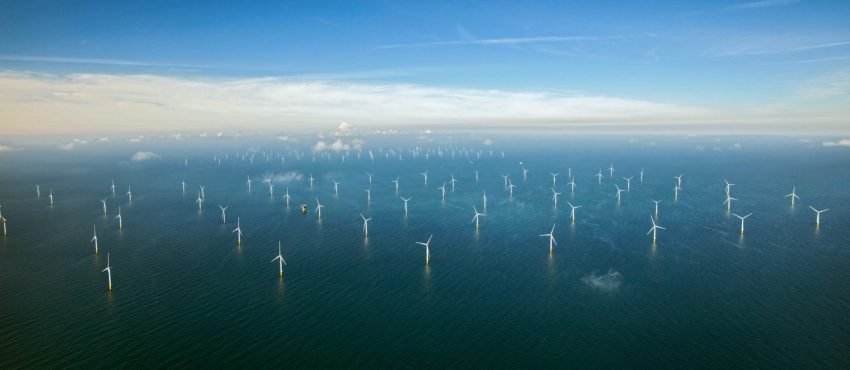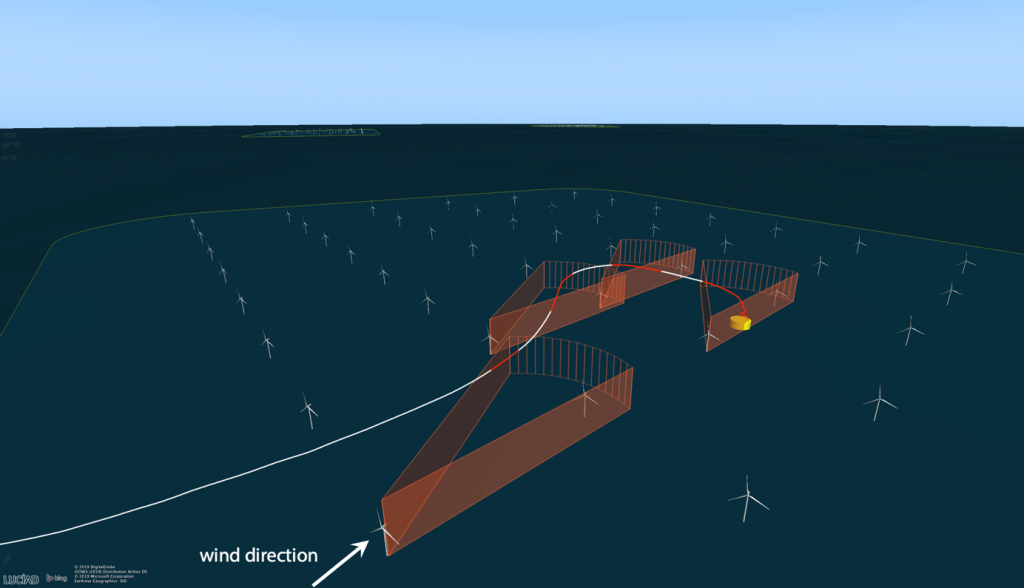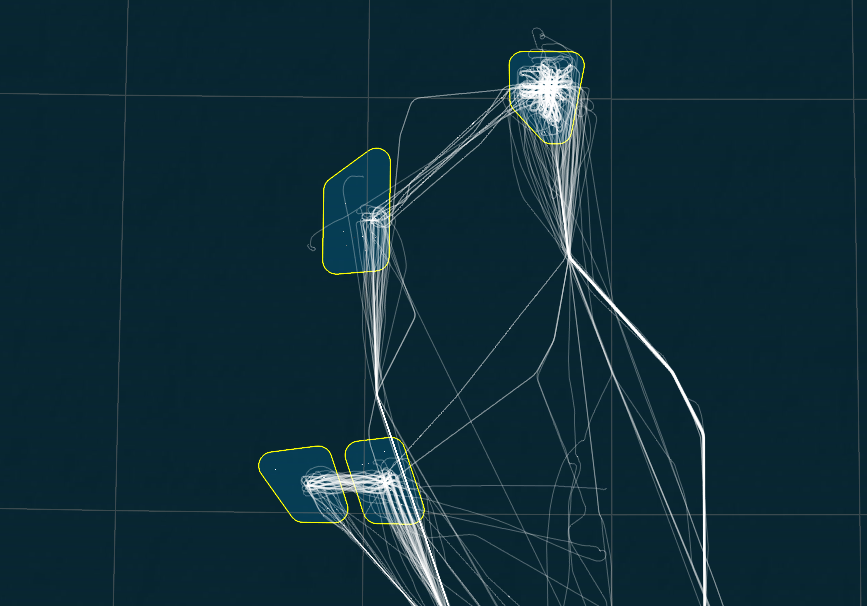To70 performs many projects, ranging from noise calculations to flight procedure design and from airport master planning to safety assessments. These projects are all very different, but they have one thing in common: every project is built upon a combination of theory, objective data and practical knowledge. It is this approach that makes the results we produce solid and valuable to our clients. This article gives an example of how To70’s approach works in practice.
Effect of wind turbine wake turbulence on offshore helicopter operations
The growing number of wind farms in the North Sea has the potential to increasingly affect offshore helicopter operations. Accessibility of offshore platforms by helicopters may be limited by the turbines, and wake turbulence encounters within the wind farm might result in a hazardous situation. It has been proposed that wind turbines cease operations whilst helicopters are nearby to mitigate the safety issues, but is this really necessary? To get closer to the answer, To70 performed a quantitative analysis of offshore helicopter flight data from flights in and around multiple wind farms (e.g. Gemini wind farm, see picture above) and discussed the results with helicopter operators.
Current regulations regarding wind turbine turbulence
With very few regulations in force worldwide, authorities base their guidelines on theoretical research on wake turbulence generated by wind turbines, which is considered to be conservative. To70 has combined theory with practice by adding actual helicopter flight data to the equation.
Helicopter flight data combined with wind turbine and wind data
The helicopter flight data used in To70’s research comes from an offshore operator’s Helicopter Flight Data Monitoring (HFDM) program containing a large number of flights to multiple wind farms in the North Sea, with onboard sensors as the source of the data. The helicopters supplying the data set came within two rotor diameters of the wind turbines. The objective flight data is supplemented with wind turbine data and wind data from a local weather station, enabling the digital reconstruction of the flights. From this, it is determined when the helicopter is within the wake turbulence zone downwind of a wind turbine, based on the wind direction and whether the turbine is in operation. These wake turbulence zones are shown in the figure below.
Quantitative analysis
Using a dataset with a large number of flights, a quantitative analysis has been made of the distribution of acceleration values to compare the behaviour of the helicopter when flying inside and outside a wake turbulence zone. The data showed no apparent difference in helicopter acceleration data between segments of flight inside and outside the wake turbulence zone or even inside and outside the wind farms themselves. This finding confirmed the hypothesis that, for offshore operations with a large helicopter, no apparent differences exist between flying inside or outside a wake turbulence zone.
The values of the minimum and maximum accelerations in all axes are all relatively low and well within the design limits. As a similar distribution of accelerations is seen in and outside wind farms, the effect of wind turbine wake turbulence on offshore helicopters does not seem to be limiting to operations, based on the available data.
The results of the quantitative analysis of helicopter flight data were supported by practical experience from helicopter operators. This reinforces the conclusion.
Supplementing quantitative results with practical experience
A quantitative analysis based on objective data is a powerful tool by itself, but to validate the findings, To70 organised an expert session with multiple offshore helicopter operators and the Dutch transport inspectorate. The general consensus from this session was that all large objects cause wake turbulence due to them disturbing wind flow and that large ships and platforms seem to cause more wake turbulence than wind turbines, whether or not they are turning.
Helicopter pilots flying offshore expect to experience turbulence to some degree and will report unexpected turbulence, but none of the helicopter operators involved have received any safety occurrence reports regarding turbulence from wind turbines. The opinions from the different operators with daily experience being in line with the results from the data analysis is fundamental and serves to reinforce the conclusion.
To70’s approach
To70 has extensive knowledge of the aviation industry and the resources to perform quantitative analyses. Experts with practical and operational experience are part of the team, enabling To70 to use the power of a combination of theory, data analysis and experience of operational experts to solve complex problems in the aviation industry.
About To70. To70 is one of the world’s leading aviation consultancies, founded in the Netherlands with offices in Europe, Australia, Asia, and Latin America. To70 believes that society’s growing demand for transport and mobility can be met in a safe, efficient, environmentally friendly and economically viable manner. To achieve this, policy and business decisions have to be based on objective information. With our diverse team of specialists and generalists to70 provides pragmatic solutions and expert advice, based on high-quality data-driven analyses. For more information, please refer to www.to70.com.



